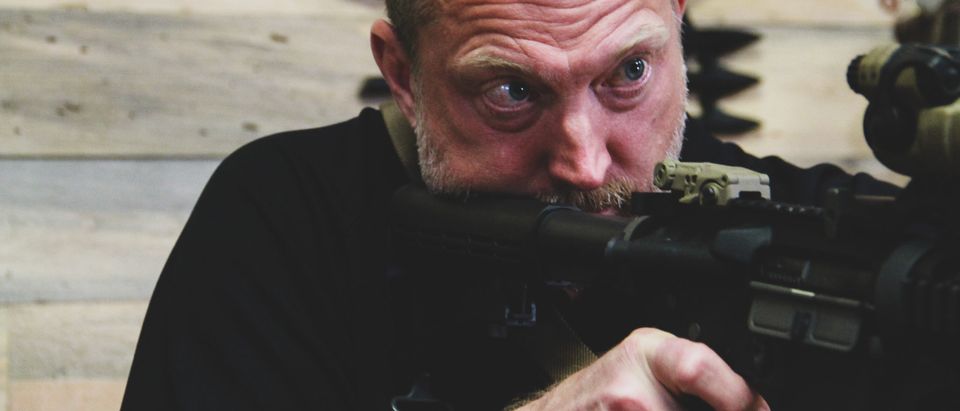By Chris Sajnog
Body Position/Shooting Platform
No matter what weapon system we’re talking about, a solid shooting position is essential to good shooting. The more solid the position, the easier it is to hold the gun and control the trigger without disturbing the sight picture. Whether you’re shooting prone, kneeling, standing or any unconventional shooting position, you should have as much of your body directly behind the weapon as possible. You need to be able to drive the gun, and just like driving your car, you should have the seat adjusted properly.
One of the things I teach my students is to have as many things pointing at the target as possible. This includes your toes, hips, shoulders and thumbs. In a perfect world, on a flat range with no one shooting back at you, this is easy to do and should be practiced. But ultimately, control of the weapon needs come from the upper body. Your lower body needs to be able to conform to the current tactical situation while the upper body drives the gun. If you’re shooting and moving, think of your lower body like the tracks of a tank and your upper body as the turret. Your lower body is doing everything it can to give your upper body the best platform from which to shoot.
Three Elements of Any Good Shooting Body Position
Bone Support
A good shooting body position employs bone support, not muscular support. A strong foundation is as necessary to shooting as a well-built house. Think about this: You’re using muscles to hold your weapon on target, you bring your focus back to the front sight and relax – your body is going to move to its natural point of aim and you’re not going to notice this subtle shift because you’re not focusing on the target.
Muscular Relaxation
Through training and natural point of aim, the shooter will achieve muscular relaxation. The shooter must learn to relax in various shooting positions. Undue strain or tension causes trembling, which is transmitted to the gun. When you’re shooting in a standing position, see if you can wiggle your toes. It’s the longest nerve in your body and if you’re relaxed enough to wiggle your toes, you’re relaxed.
Natural Point of Aim
Your natural point of aim (NPA) is where you’re “naturally” pointing when all your muscles are relaxed. This is critical to learn, especially if you want to shoot faster, because you will recoil towards your NPA and you will be forcing the sights back on target with each round fired.
To find your natural point of aim in any shooting position, once a target is established, close your eyes, take a deep breath and exhale. Next, concentrate on making your body completely relaxed. Doing this will cause the gun to fall to your natural point of aim. Open your eyes and adjust your position by shifting your body until the gun points to the target at the exact point where the bullet is to strike. Do not make any adjustments using muscle. Even very minor adjustments must be made with the lower body.
In a standing position, stand up straight and relax your hips—they will be point towards your NPA. The easiest way to adjust where you’re aiming is by simply pointing your toes in or out.
Obviously, in combat or any timed event, you can’t do this. But if you practice it enough, your body will learn what a good shooting body position feels like, and you’ll naturally end up in a more advantageous position to deal with your threats.
Obviously, there are too many shooting positions for me to discuss in a single post while also making sure you read it without falling asleep. If you remember the basic elements of a good shooting position and put them into practice on the range and in your dry-fire training, you’ll be able to apply them no matter what position your body ends up in when it’s time to deliver effective customer service to someone who asks for it.
WATCH:
Retired Navy SEAL Chris Sajnog, a Master Training Specialist in the Navy, was hand-selected to write the US Navy SEAL Sniper Manual. He used this experience, plus four years of studying neuroscience and elite performance, to develop the New Rules of Marksmanship — a fundamental shift in learning how to shoot. He’s the author of two bestselling books, How to Shoot Like a Navy SEAL and Navy SEAL Shooting, and the owner of Center Mass Group, LLC a 100% Service-Disabled Veteran-Owned Small Business in San Diego, CA. Chief Sajnog, now offers his unique training online at https://chrissajnog.com.
Click here to visit Chris’s website and training courses.
Click here to follow Chris on Facebook.


